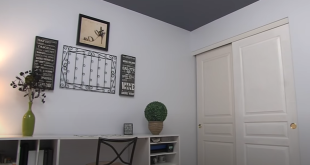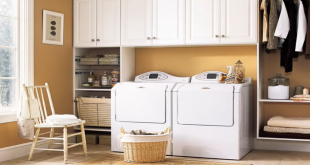Are you struggling to organize your child’s room? Here are some practical tips to declutter and maximize space.
Designate specific storage areas for toys, books, and clothes to teach your child organization from an early age. Use clear containers and labels to make it easy for your child to find and put away their belongings, and consider implementing a reward system for maintaining order.
Additionally, involve your child in the process to make them feel empowered and responsible for their space. By following these tips, you can create an organized and functional room that suits both you and your child’s needs.
:max_bytes(150000):strip_icc()/closet-decorate-8f955cf6eb814791b6e058fbd9ee1a4c.jpg)
Credit: www.realsimple.com
Understanding Children’s Room Organization
Understanding Children’s Room Organization is essential for creating a functional and playful environment that allows kids to thrive. A well-organized children’s room not only contributes to keeping the space tidy, but also plays a significant role in their development and well-being. Through strategic organization, parents can set the stage for their child’s independence, creativity, and overall happiness within their personal space.
Importance Of A Well-organized Children’s Room
A well-organized children’s room serves as a foundation for fostering independence and responsibility in kids. When kids know where their belongings are stored, they learn to manage their belongings and keep their space tidy. This enables them to become more self-sufficient and accountable for their personal items.
Furthermore, an organized room can have a positive impact on a child’s mental and emotional development. A clutter-free environment can reduce stress and anxiety, making it easier for kids to concentrate and engage in creative play. Moreover, it promotes a sense of ownership and pride, as children feel empowered to take charge of their belongings and space.
Creating A Functional And Playful Environment
Incorporating playful elements into a well-organized children’s room can enhance their overall experience within the space. By combining practical storage solutions with fun and whimsical designs, children are more likely to take an active interest in maintaining the organization of their room. Introducing child-friendly organizing tools and colorful storage bins can make the process enjoyable for them.
Additionally, a functional and playful environment encourages creativity and imagination. When children have easy access to their toys, books, and art supplies, they are more inclined to engage in imaginative play and self-expression. This type of environment not only supports their developmental growth but also reflects the joy and vitality of childhood.
Decluttering Strategies For A Child’s Room
When it comes to organizing a child’s room, decluttering is the first crucial step. A clutter-free environment can help promote a sense of calm and encourage creativity in children. Implementing effective decluttering strategies will not only streamline the space but also teach kids valuable organizational skills. Here are some practical tips for decluttering a child’s room.
Sorting Toys And Items Based On Usability
Involving children in the decluttering process, ensuring each H3 heading adheres to HTML syntax can be a daunting task, but a simple yet effective approach is to encourage them to sort toys and items based on usability. Create separate bins or containers for different categories, such as toys, books, art supplies, and clothes. Label each container boldly and colorfully to make it easier for children to distinguish and organize their belongings. By sorting items based on usability, children can easily access and use what they need while keeping the rest neatly stored away.
Involving Children In The Decluttering Process
More often than not, children have a strong attachment to their belongings, making it essential to involve them in the decluttering process. Start by explaining the benefits of decluttering and involve them in decision-making. Encourage them to decide which toys or items to keep, donate, or discard. This not only empowers children to take ownership of their space but also teaches them about making conscious choices. Additionally, take a collaborative approach and work together as a team. Set achievable goals and provide gentle guidance to keep the decluttering process positive and rewarding for children.
Creative Storage Solutions For Children’s Rooms
When it comes to children’s rooms, keeping everything organized and clutter-free can be quite a challenge. However, with some creative storage solutions, you can transform a chaotic space into an organized and visually appealing room for your little ones. From utilizing space-saving furniture to incorporating colorful and themed storage bins, there are numerous ways to maximize storage while adding a playful touch to the room.
Utilizing Space-saving Furniture
Utilizing space-saving furniture is a practical approach to maximize storage in a child’s room. Look for beds with built-in drawers or cubbies, bunk beds with integrated desks or play areas, and multi-functional furniture pieces that offer additional storage space. This not only optimizes the use of the available space but also reduces clutter by providing designated storage areas for clothes, toys, and books.
Incorporating Colorful And Themed Storage Bins
Another way to add a fun and organized touch to a child’s room is by incorporating colorful and themed storage bins. Opt for bins in vibrant colors or featuring your child’s favorite characters or themes. This not only makes tidying up more enjoyable but also encourages kids to take an active role in maintaining the cleanliness of their space. Consider labeling the bins to make it easier for children to categorize and find their belongings.
Personalization And Child-friendly Organization
When it comes to organizing children’s rooms, personalization and child-friendly organization are the key elements for creating a space that is not only tidy but also a reflection of your child’s personality and interests.
Customizing Storage Solutions To Match The Child’s Preferences
Customizing storage solutions is crucial in ensuring that your child feels connected to their space. By incorporating personalized storage options, you can create a room that not only meets your child’s organizational needs but also aligns with their individual tastes and preferences. This can include customized labels for bins and drawers, color-coded shelving based on their favorite colors, and personalized storage units featuring their name or favorite characters.
Incorporating Interactive And Educational Organization Tools
Child-friendly organization goes beyond just tidying up. Incorporating interactive and educational organization tools can not only make the process of organizing fun for children but also foster a sense of responsibility. Consider utilizing educational wall charts for teaching kids about the importance of organization, interactive storage containers for sorting toys or clothes, and magnetic boards for displaying and organizing artwork and school projects.
Practical Maintenance And Upkeep Tips
Practical Maintenance and Upkeep Tips are essential for keeping a child’s room organized and clutter-free. By implementing simple daily organizing routines and teaching children good habits, parents can ensure that the room stays tidy and functional.
Implementing Simple Daily Organizing Routines
Consistency is key when it comes to maintaining an organized space. Implementing daily organizing routines helps children understand the importance of tidiness and creates a habit of keeping their room in order. Encourage children to spend a few minutes each day putting away toys, straightening up their desks, and making their beds. Consistent efforts will make a significant difference in the overall organization of the room.
Teaching Children To Maintain The Organization Of Their Room
Teaching children the skills to maintain their room’s organization empowers them to take ownership of their space. By involving children in the organization process and showing them simple tricks to keep their belongings tidy, parents can instill a sense of responsibility and pride in their children. Providing fun and practical storage solutions can also encourage children to keep their rooms organized and make tidying up an enjoyable activity.
Frequently Asked Questions Of Organizing Tips For Children’s Rooms
How Can I Encourage My Child To Keep Their Room Tidy?
Encourage your child to pick up after themselves by making it fun. Use colorful storage bins, label shelves and drawers, and involve them in the organization process. Reward their efforts with praise and incentives to create a positive association with tidying up.
What Are Some Creative Storage Solutions For Children’s Rooms?
Maximize space with multifunctional furniture like beds with built-in storage, hanging wall organizers, and under-bed drawers. Use bookshelves with bins, cubbies, and labeled baskets to keep toys, books, and art supplies organized and easily accessible.
How Can I Involve My Child In The Organization Process?
Involve your child by letting them choose their own storage solutions and helping them label items. Make it a game by setting a timer and turning tidying up into a race, or create a reward system for keeping their room clean and organized.
Conclusion
Organizing your child’s room can significantly improve their overall well-being and create a positive environment for play and rest. By implementing the tips discussed in this blog post, you can transform their space into a functional and tidy area that promotes creativity and independence.
With a simplified and practical approach, you can maintain an organized and harmonious space for your child to thrive.
 Support Home Optimize Home Life With Expert Support
Support Home Optimize Home Life With Expert Support






